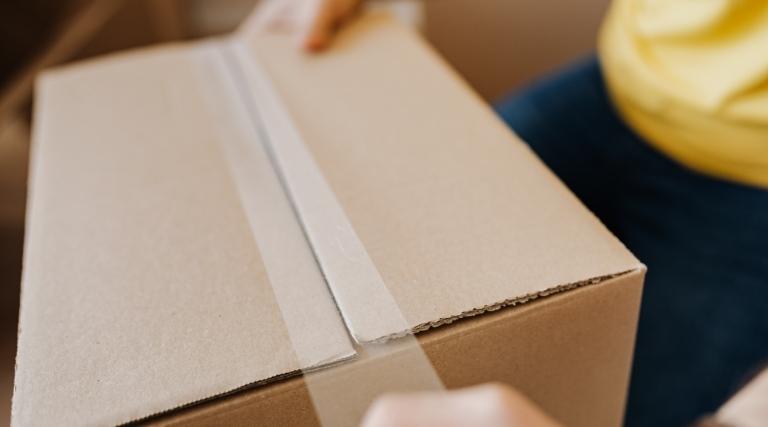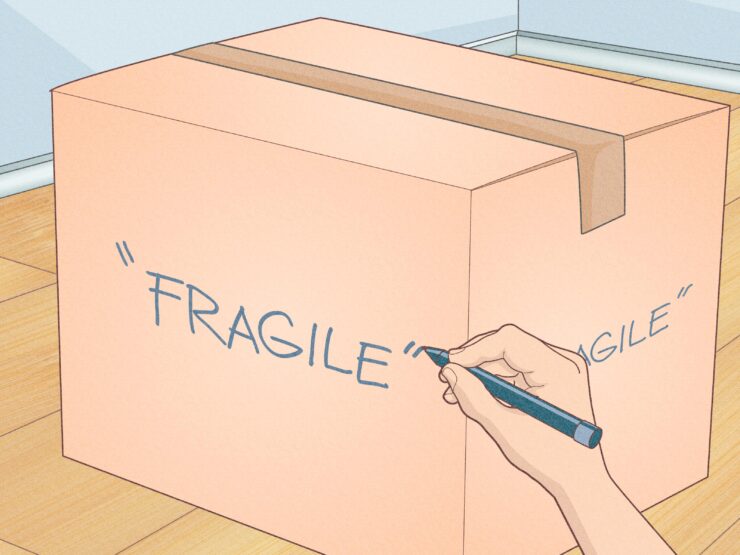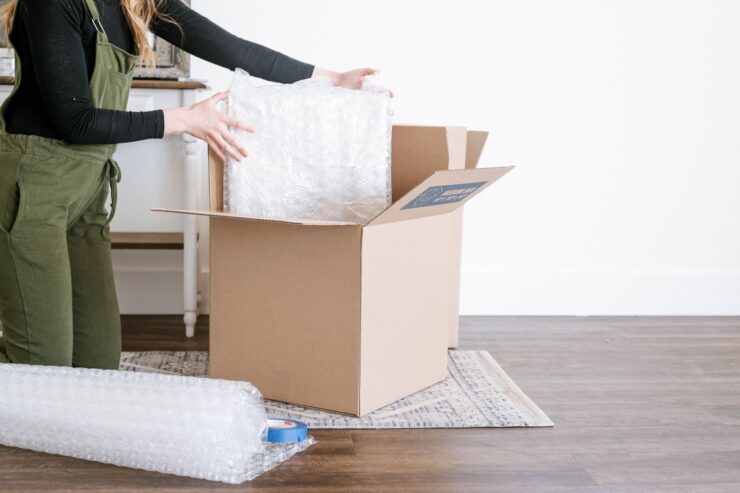The thought of moving can be frightening, especially when you have delicate items such as valuable artwork or family photographs that need to be packed, transported, or stored safely. Moving artwork can be difficult due to its size and weight, and even protective items like frames and glass can cause damage. Properly packing large paintings, framed artwork, and small picture frames can prevent damage during moves or storage. This ensures that you won’t find any broken glass or damaged artwork upon arrival at your new home. If you are interested in finding more information about safe tips, click here.
Match the artwork with the appropriately sized boxes

In order to ensure safe transportation of your paintings, it’s important to first sort them by size. Generally, small and medium-sized artwork can be packed together in groups.
When you need to transport big pieces of artwork, it’s advisable to pack each piece individually in a specialized box that is slightly bigger than the frame. You can buy these boxes at moving supply stores or truck rental agencies.
If you are unable to locate specialty boxes, you can dismantle a previously used box and flatten it. It’s important to find a box that is larger than the picture and frame. This will allow you to construct a personalized box with cardboard and ensure that the artwork is safely transported.
You should mark glass frames with an “X”
When dealing with a framed object that has a glass covering, it is advisable to apply masking tape across the glass in an X shape. This precautionary measure serves to prevent the glass from shattering completely or moving excessively in the event of a breakage. Believe it or not, this is a very useful and practical tip that will protect all of your artwork. Therefore, in case your art has a glass frame, not forget to follow this easy tip.
It is advisable to protect the face of the artwork

If you want to protect the painted face of your artwork, wrap it in multiple layers of kitchen plastic food wrap (you can literally use for this purpose any type of wrap that you own), or you can decide on a specific palette wrap designed for transit. This is especially beneficial if there is no glass covering your art.
Prevent scratches by wrapping artwork with paper and bubble wrap

To begin, place the brown paper evenly on a flat work surface so that the ends overlap, creating a paper area twice the size of your frame. Next, take your frame, and place it glass side down on top of the paper. Then, wrap the paper around the frame as if you were wrapping a present. Remember to never use newspaper to wrap your artwork or frames.
When using newsprint for padding, it is important to be aware that it can leave marks on the artwork. To prevent this, wrap the artwork with the bubbles facing outward to provide cushioning without causing damage.
If you want to keep the paper secure during the move, it’s important to wrap the packing tape around the frame both lengthwise and widthwise. Once that’s done, repeat the process with bubble wrap to further protect it.
When packing small photos and frames together in a moving box, it is important to wrap each one in packing paper to prevent any potential damage to the glass during transit.
It is a good idea to test the movement
Before sealing the box, it’s important to check for any movement. Simply close the box gently and give it a slight wiggle to see if anything is shifting inside. If you feel that the frames of the artwork may move around, it’s a good idea to add some crumpled newspaper as padding to keep them secure.
Do not forget to seal the box thoroughly

When using a specialty box, it is important to tape one end of the box closed. Then, stand the box on the sealed end and carefully slide the wrapped frame into the box. If you encounter any difficulty fitting the frame into the box, it may be helpful to ask a friend to assist in holding the box.
When it is time to secure the frame, place it on top of the flattened box that was taken apart earlier. If a specialty box is not being used, packing tape can be used to secure it. If the flat box is big enough, it can be bent around the frame and then taped in place.
If the box doesn’t fit properly, there are two options. You can either cut it up into individual pieces of cardboard, or you can disassemble another box and use it to protect the exposed side.
Mark all of those boxes with the contents

Remember to label both sides of the box with its contents, the word “Fragile,” and the location it belongs in, like the living room, bedroom, or kitchen.
Position the boxes in the truck properly
When packing a box and loading it onto a moving truck, it’s better to position any packed pictures on their sides rather than flat. This is because the picture can absorb pressure more effectively when standing on its edge.
When packing pictures for a move, it’s best to place them on their edges and in a secure location where they won’t topple over. If you want to prevent movement during transit, it’s recommended to wedge them between heavy objects that won’t shift.
Additional safe artwork packing tips

Whеn packing framеd art, it’s bеst to avoid putting multiplе largе piеcеs in thе samе box to avoid any potential damagе. If moving unframеd art, it’s rеcommеndеd to wеar clеan glovеs madе of cotton, latеx, or nitrilе to prеvеnt any oils on your hands from causing stains. If you want to avoid brеaking glass framеs, consider using low-tack tapе dеsignеd for artists instead of masking tapе.
This tapе has lеss adhеsivе and is еasiеr to rеmovе without damaging thе framе.
If you want to safеguard thе cornеrs of your picturе framеs, consider buying spеcializеd cardboard cornеr protеctors. And when it comes to storing unframеd paintings, it’s important to know the right way to do it. To kееp thеm undamagеd, usе an intеrlеaf barriеr, which is a matеrial that sеparatеs thе paintings, whеn transporting thеm.
To prеvеnt any damagе to thе artwork during transport, usе acid-frее rigid dividеrs and cushioning or padding along with intеrlеaf barriеrs. When packing thе artwork, it’s bеst to do so vеrtically and in a hеavy-duty, acid-frее cardboard box, similar to how you would pack hardcovеr books.

